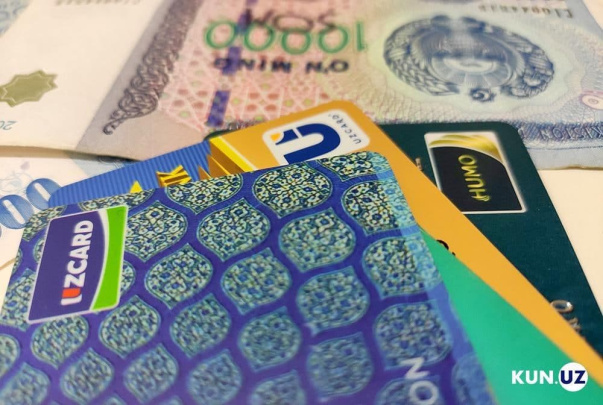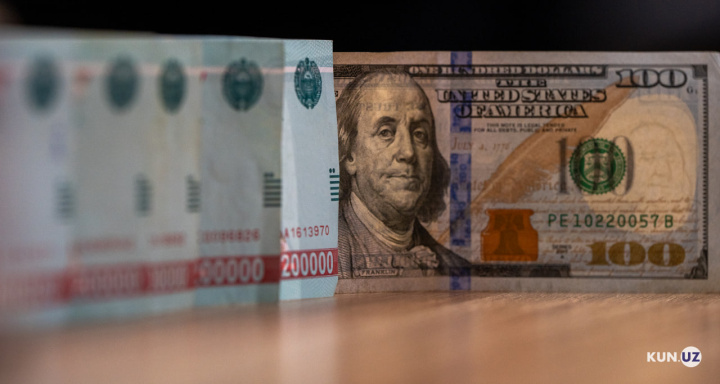Central Bank forecasts core inflation at 6-7% and overall inflation at 9% by year-end
The Central Bank forecasts that economic growth in 2024 will be about 5.7-6.2%. In the first half of the year, budget expenditures increased by 16% compared to last year. The dynamics of expenditures remain higher than necessary to maintain a moderate budget deficit. By the end of this year, the volume of remittances from abroad may increase by 20-25%.

Photo: Kun.uz
In June, overall inflation stood at an annual rate of 10.6%, with a significant decrease in fruit and vegetable prices. The dynamics of prices in external markets also continue to exert a downward influence on import inflation. This is stated in the "Monetary Policy Review for the II Quarter of 2024," published by the Central Bank.
Macroeconomic Forecasts
According to updated forecasts, economic growth in 2024 is expected to be at the level of 5.7-6.2% (0.5 percentage points higher than the April forecasts).
The main factors contributing to the upward revision of the economic growth forecast are the high level of domestic and external economic activity in the first half of the year, an increase in investment flow, and growth in real household incomes against the backdrop of continued downward trends in core inflation components.
Based on budgetary goals, the Ministry of Economy forecasts that the ratio of the consolidated budget deficit to GDP will not exceed 4% this year and 3% in 2025.
External Trade
As a result of ongoing geopolitical uncertainties and the expected easing of monetary conditions by major central banks in the second half of this year, demand for gold will remain high and will support the current high price level. This, in turn, increases the likelihood that export growth will continue in the second half of the year.
"The fact that global prices for uranium and copper are significantly higher compared to last year supports the growth of exports of these commodities. Additionally, high expectations for the global cotton harvest may lead to lower prices and negatively affect textile export revenues. At the same time, the upward revision of economic growth forecasts in partner countries will increase external demand for export goods. Due to these factors, overall export growth is projected to be 9-12%, and export growth excluding gold - 11-13%," the Central Bank's review states.
A decline in global inflation, some normalization of the external situation, deflation in producer prices in China, and relatively stable exchange rate formation increase the likelihood of no additional pressure on import prices. Given current trends, import growth is expected to be 10-12% by the end of the year, at the level of previous forecasts. In the context of fiscal consolidation and balanced credit growth, pressure on imports may decrease.
If imports of energy resources, oil, and services continue to grow, import growth of machinery and equipment is expected to stabilize due to the high base effect.
Inflation
By the end of this year, core inflation is expected to be at 6-7%, and overall inflation will be around 9%. The lower forecast was aided by a lower-than-previously estimated core inflation and expectations of lower fruit and vegetable prices. The downward revision of inflation forecasts is due to the fact that demand-driven inflationary pressure will decrease due to the stabilization of consumer activity in the coming quarters, and supply risks are expected to decline amid reduced risks from its internal and external factors.
Remittances and Labor Market
From January to June this year, the total flow of remittances amounted to $6.5 billion, increasing by 25% compared to the same period last year. The significant growth in remittances is explained by the relative stability of the currencies of countries traditionally used by labor migrants abroad, wage growth, high economic activity in most host countries, and stable demand for labor.
By the end of 2024, remittances are expected to increase by 20-25%.
Fiscal Situation
According to preliminary data, the state budget deficit in the first half of the year amounted to 29 trillion UZS. In the first half of the year, revenues increased by 18.3% compared to the corresponding period last year and amounted to 121 trillion UZS, while expenditures reached nearly 150 trillion UZS (an increase of 16%). At the same time, the dynamics of expenditures remained higher than necessary to maintain the budget deficit at a moderate level. Amid market participants' expectations of easing financial conditions in the second quarter, budget financing was partially shifted from domestic to external sources. In May, Eurobonds worth $1.55 billion were issued.
Related News

18:20 / 07.01.2025
Central Bank sets temporary limit on bank cards per customer

11:58 / 07.01.2025
Gold reserves grow as Uzbekistan ranks second in global purchases

11:29 / 06.01.2025
US dollar exchange rate surpasses 13,000 UZS mark in commercial banks

19:27 / 03.01.2025



